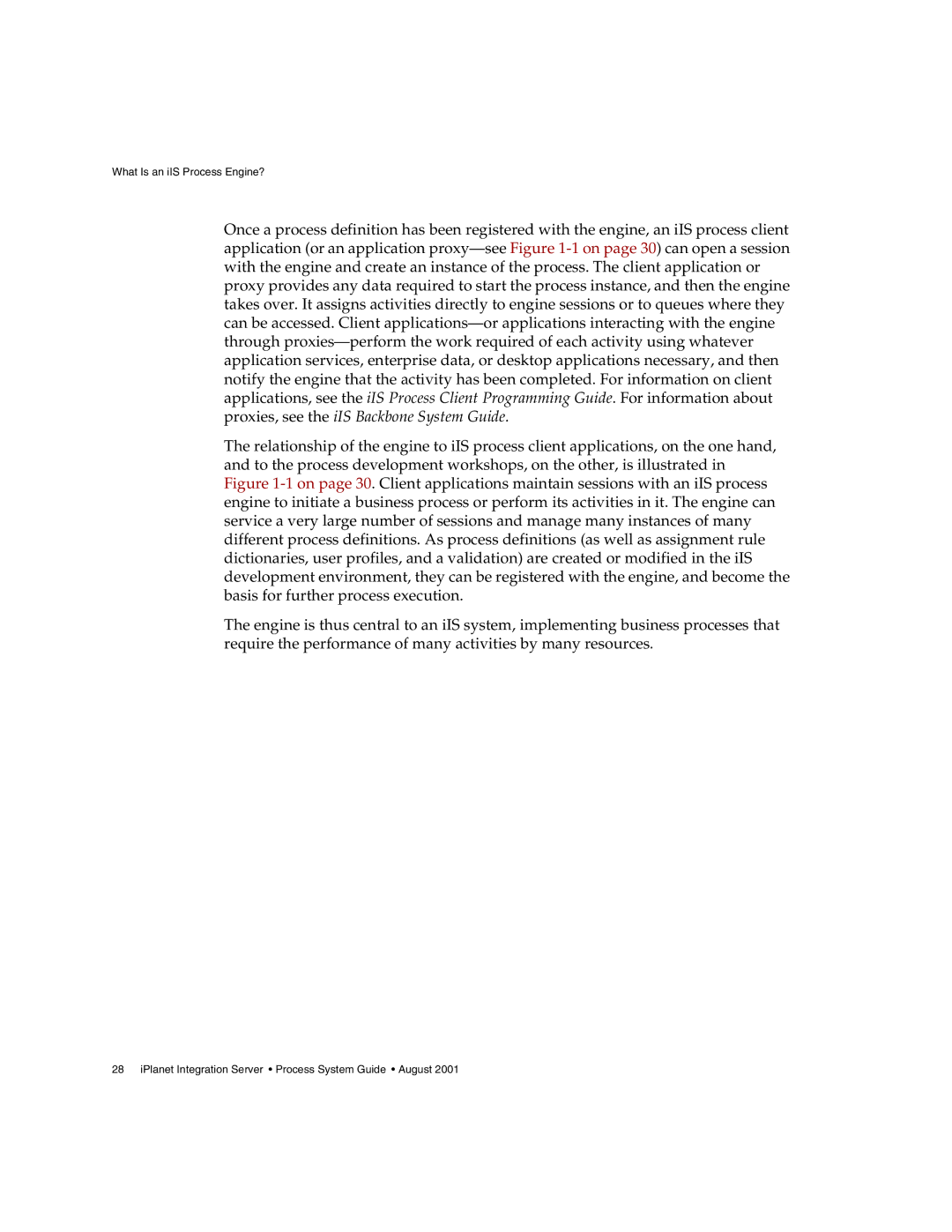What Is an iIS Process Engine?
Once a process definition has been registered with the engine, an iIS process client application (or an application
The relationship of the engine to iIS process client applications, on the one hand, and to the process development workshops, on the other, is illustrated in Figure
The engine is thus central to an iIS system, implementing business processes that require the performance of many activities by many resources.
